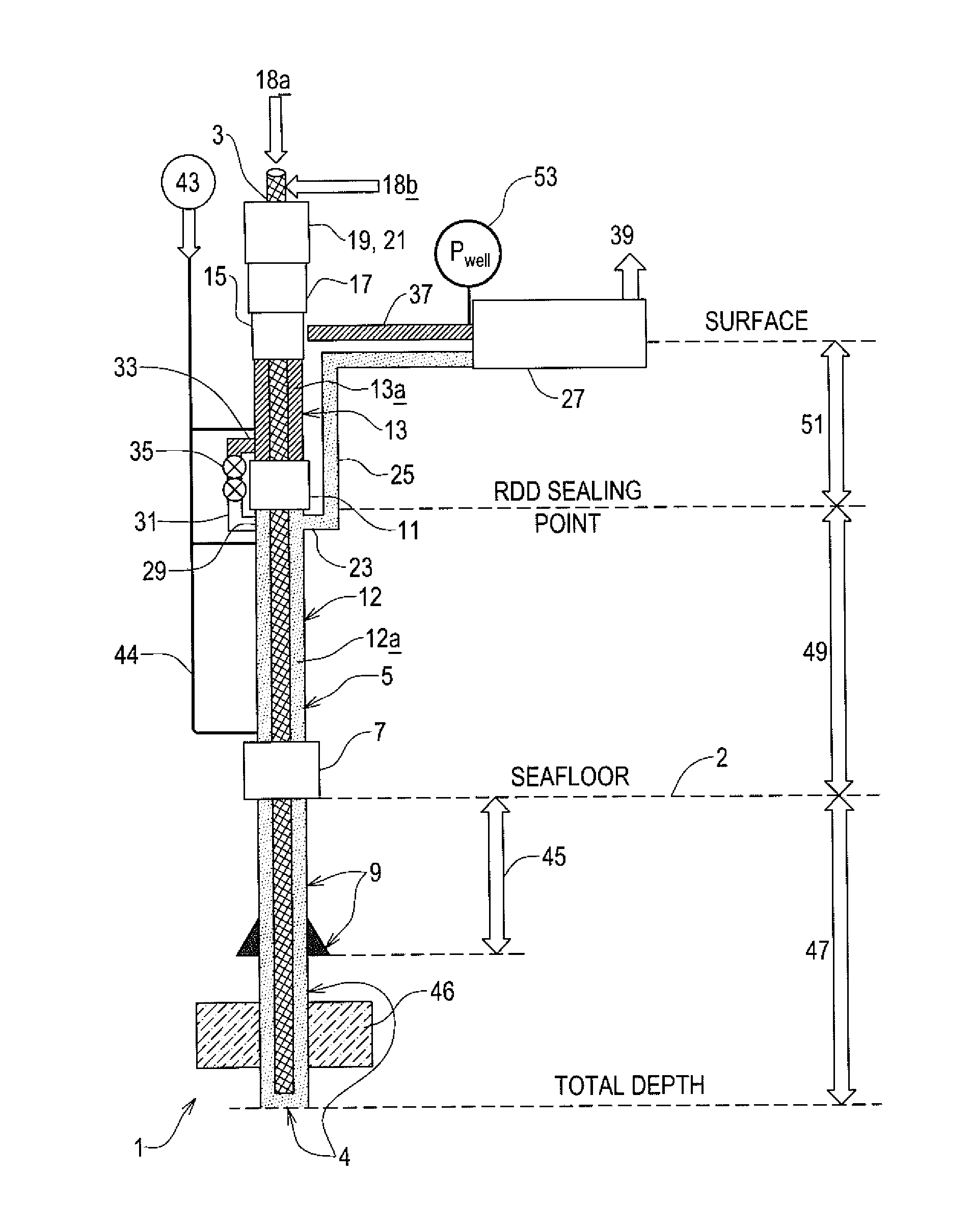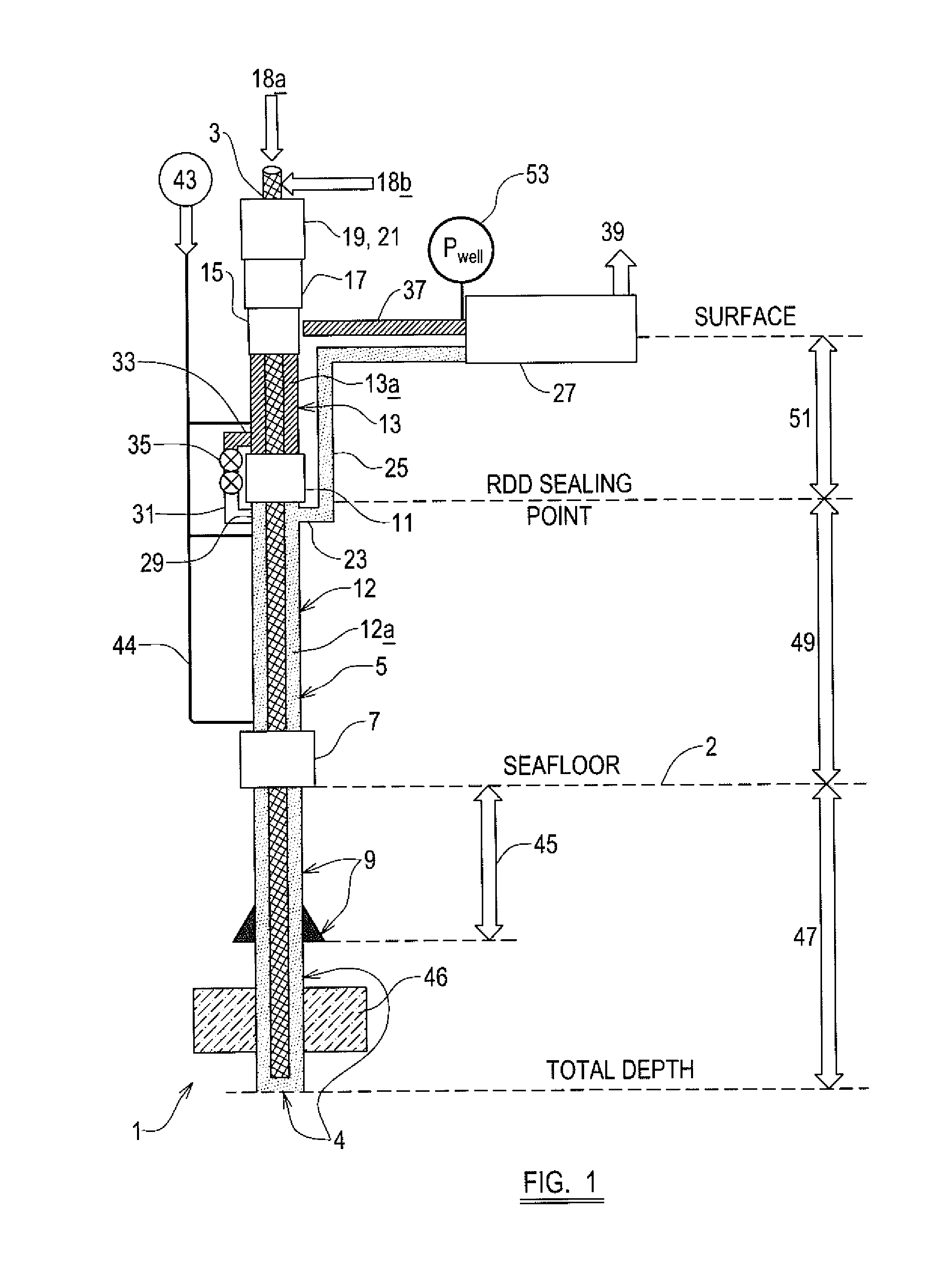Drilling method for drilling a subterranean borehole
a subterranean borehole and drilling method technology, applied in the direction of borehole/well accessories, survey, sealing/packing, etc., can solve the problems of mud entering the formation, momentary reduction of bhp, formation of kicks, etc., and achieve the effect of higher level of safety
- Summary
- Abstract
- Description
- Claims
- Application Information
AI Technical Summary
Benefits of technology
Problems solved by technology
Method used
Image
Examples
first embodiment
[0084]The vertical distances / depths between elements of the system will now be defined in order to illustrate (by way of example) the invention. The SSBOP 7 is located on the seabed floor 2 and is connected to the top of the well bore section 4. The wellbore 4 extends below the SSBOP and the last casing 9 is set at 5,000 ft. This length has reference numeral 45 in FIG. 1. Along this length of the wellbore 4 there is a formation 46 of hydrocarbon fluid. The open hole / drilled section extends below reference numeral 45 to a further 2,000 ft below the casing 9 resulting in a total wellbore 4 depth of 7,000 ft below the SSBOP. This length, from the seabed floor to the bottom of the open hole section has reference numeral 47. The first portion of the riser 12, which extends from the SSBOP 7 to the RDD 11, has a length of 5000 ft. This length has reference numeral 49. The second portion of the riser 13, which extends from the RDD 11 to the QCA 17, is 1,500 ft. This length has reference num...
second embodiment
[0131]All calculations are performed in the same manner as that for the second embodiment and the kill mud deployment procedure is also identical.
[0132]The second and third embodiments of the invention have other advantages over and above the use of a single mud weight of a lower static mud density, as drilling systems using a single mud density are less complex to operate in comparison to a dual-mud weight system.
[0133]Embodiments of the inventive method can be performed by modification of existing off-shore riser configurations to include a riser drilling device. Optionally, a quick closing annular preventer (QCA) and riser flow spool system may also be added to existing off-shore riser configurations. It will be appreciated that according to the embodiment employed, the QCA may be installed at, but not limited to, a position either above or below the subsea RDD that seals the first and second portions of the riser, or the QCA may not be used at all. If the QCA is not used, then t...
PUM
 Login to View More
Login to View More Abstract
Description
Claims
Application Information
 Login to View More
Login to View More - R&D
- Intellectual Property
- Life Sciences
- Materials
- Tech Scout
- Unparalleled Data Quality
- Higher Quality Content
- 60% Fewer Hallucinations
Browse by: Latest US Patents, China's latest patents, Technical Efficacy Thesaurus, Application Domain, Technology Topic, Popular Technical Reports.
© 2025 PatSnap. All rights reserved.Legal|Privacy policy|Modern Slavery Act Transparency Statement|Sitemap|About US| Contact US: help@patsnap.com



